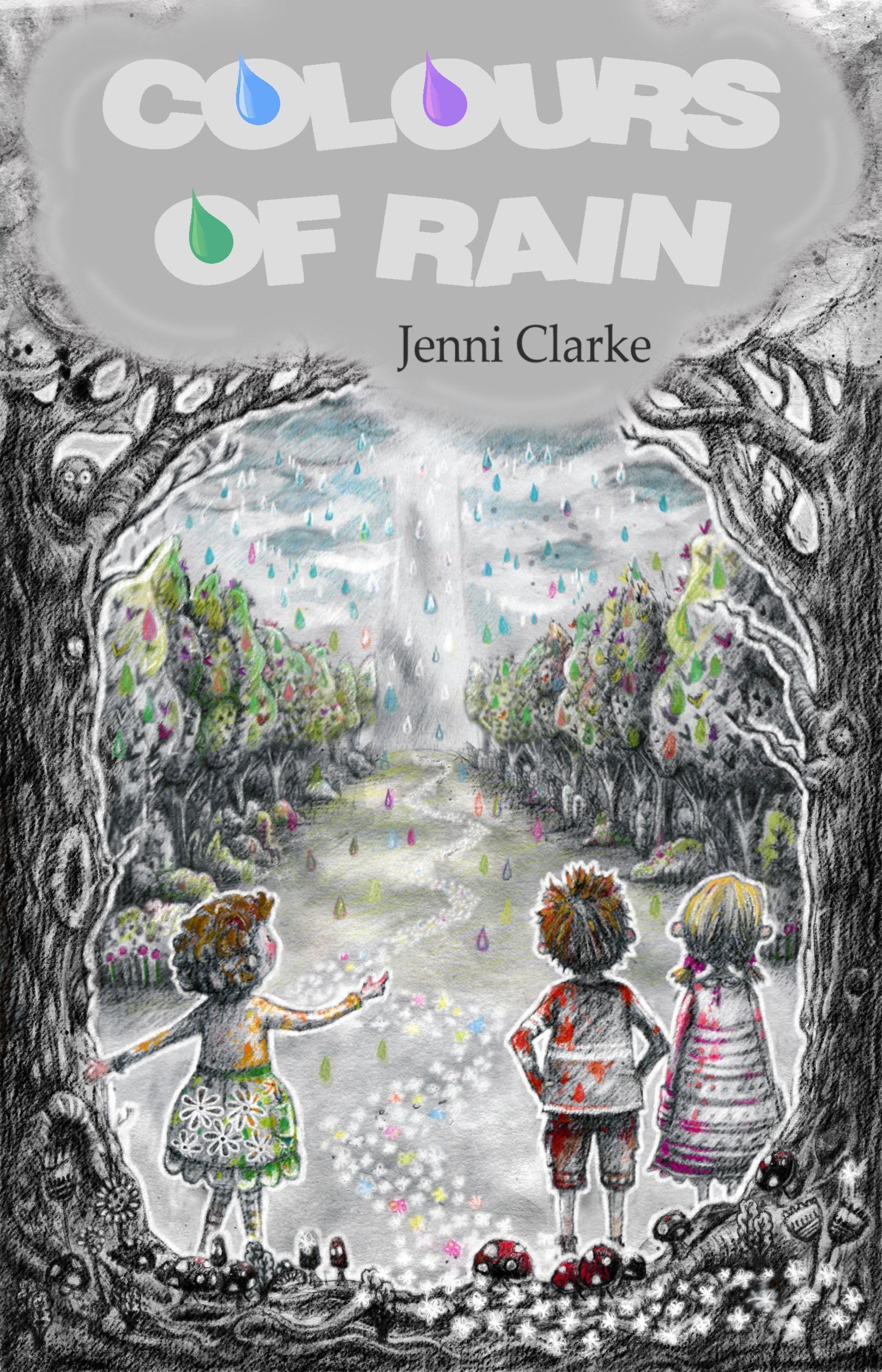AUTHOR MUSINGS
Some words of wisdom
Please sign up below for exclusives, free books, and a monthly email.
When Writing Colours of Rain 02nd May 2021 Podcast Version >>
I loved being read to as a child.
Snuggling in bed, listening to the words and imagining the characters and their journey through the story. I would think about what might happen next as I fell asleep.
I loved stories with quiet magic, fairy tales, beautiful descriptions, adventurous quests, and a hint of mystery.
I wanted to write a beautiful story that could be loved by the adult reading it aloud as well as the child listening and later, reading it to themselves.
Then, as I was trawling through the virtual world on my laptop for inspirational quotes, I stumbled upon a writing prompt.
Imagine a world where colours can only be seen when it rains.
Oh, I imagined with no difficulty at all.
When I walked in the rain, I saw colours anew and felt the excitement and awe of one who only saw these colours in the rain. How magical both the rain and colours would be. How precious.
I tucked the idea into the back of my mind with the question what if drifting alongside and waited.
One night a little girl entered my imagination, her name was May but later this changed to April for April showers, and I knew she was the main character for Colours of Rain. What I didn’t know was that her Grandma had just died. I wasn’t planning on writing a sad story or one dealing with grief, but it didn’t flow until I accepted the fact that her Grandma had died.
I wonder now if this had something to do with imagining a grey world and how we associate greys and a certain dullness with grief and death. Maybe the lack of colour in my day-dreaming had permeated my emotions and triggered this response in my mind . As the story progresses and April’s grief meanders through its stages, more colours enter the story.
Was this an intentional author’s trick? No.
Was it a subconscious choice? Probably.
I knew Grandma was an important person in the story for more than the emotional reasons. She was a link between the magical side of life and the ordinary. She was a storyteller, a believer in magic, and a believer in the right to see colours all the time, and April was a girl of my heart. A girl who wanted to believe in her Grandma’s fanciful stories. A girl who wanted to make a difference in the world.
While writing this book, I continued to think about colour and its importance in our lives. The influence it has on me and my moods, like how the splash of a red tulip in a sea of green brings a smile to my lips. How a landscape blanketed in white is peaceful. How the bright spring-green leaves of trees signify hope and new beginnings.
I remembered strange facts about colour, such as some sight-impaired people being able to sense a colour with their hands. I’m not sure smelling colours is a real thing although it is featured in the story.
I enjoyed thinking up names for all the different shades of grey and then realised just how many different greys there are in our world.
Did you know our eyes are capable of distinguishing over one million colours? One million. But we don’t have names for them all. The first society to use the word blue was the Egyptians, they were the only culture who produced blue dyes, the colour and its name spread, gradually shades of blue were recognised and used to describe the sky and the sea, although the sea is seldom one colour. Other colour names have been found in ancient texts but not blue.
Did humans not perceive blue or just not distinguish it from tones of grey or green because they had no specific word?
Not everyone sees colours in the same way. April’s Mother, for example, loves the soft gentle tones of grey. Did she see them differently from Grandma? There are many people who are red-green or blue-yellow colour blind, but it doesn’t need to be an extreme difference. Even I and my husband see colours differently. Sometimes I see a blue when he sees a green, especially when it is a turquoise shade. There is an element of subjectivity in blended colours.
It was hard to write beautiful descriptions without using colour names, but a challenge is good for any writer, and so I wrote about other senses and used names of objects we see as grey.
‘April snuggled under her elephant-grey bed cover and
lay her head on her raincloud of a pillow.’
‘A climbing rose,
whose donkey-grey flowers smelt like fairy perfume, twisted around the rotting wood,
creating a new post as the old one decayed.’
‘The herbs straggled across their wooden boundaries,
Touching leaves and mingling their scents.’
I loved writing this story with its quirky characters, whimsical tales, magical adventure, and underlying real-life emotions. There were moments I despaired of finishing it, moments when I didn’t feel worthy enough to write the tale, that somehow, I was letting the characters down, but I persevered, wrote, edited, found an illustrator who captured the essence on the cover, and I launched my story into the ocean of books.
I hope I have created a beautiful story, worthy of a child’s sweet dreams and an adult’s smile.
Subscribe to my secret library
Copyright © 2020 Jenni Clarke Author. All Rights Reserved
